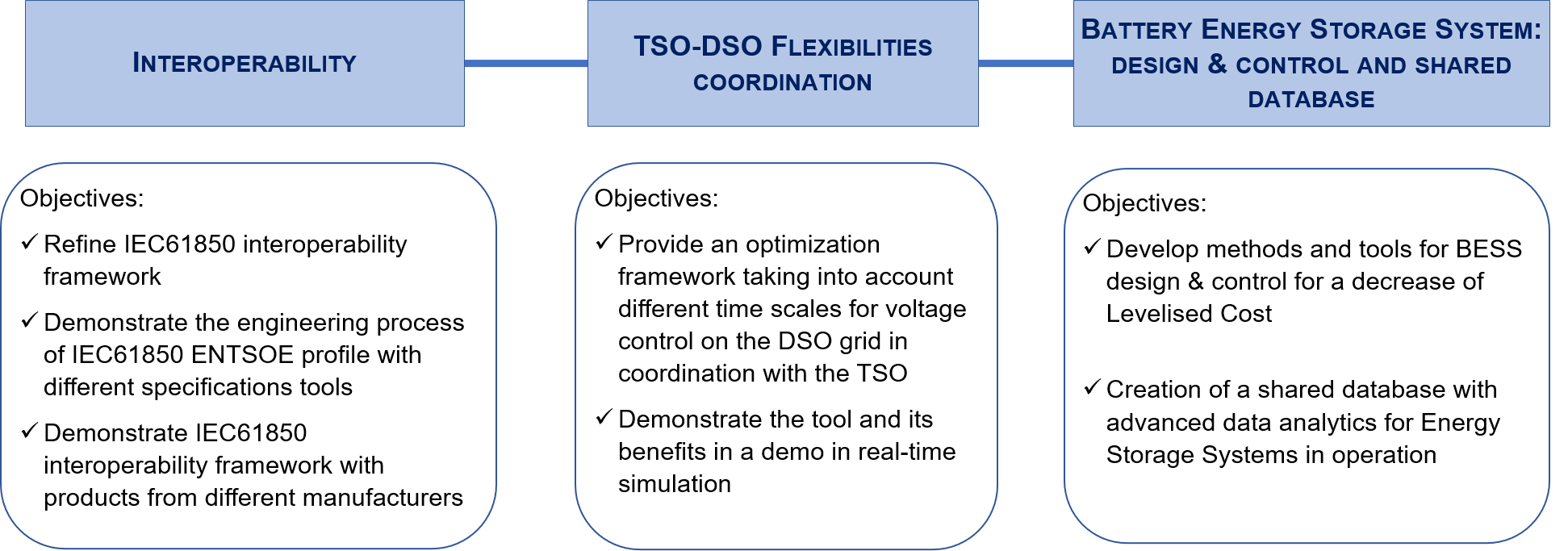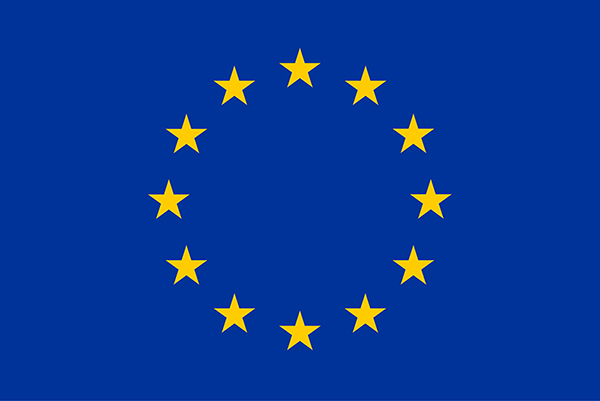WP7 – Scaling up and replication
WP7 is structured along three main activities:

![]() Partners involved
Partners involved
Partners involved: CEA, EPFL,IT4Power,Nester, Ingeteam,Schneider Electrics,EFACEC, SAFT, ELIA, REN, REE, RTE

WP Leader contact: Yves-Marie BOURIEN, CEA
![]() Objectives
Objectives
- To improve the interoperability framework IEC61850 for plug&play integration and better exploitation of flexibility solutions, in compliance with ENTSO-E’s dedicated workgroup. This work (using real-life data from the demos) will be an important step to lower the cost of integration and to promote a competitive procurement environment;
- To develop an optimal TSO-DSO coordination framework for operational planning and management of flexibility sources;
- To develop application-specific design & control of Battery Energy Storage Systems (BESS), including multiservice applications, in order to improve the cost effectiveness of storage installations, and the profitability of the business models;
- To set up a shared field-experience database and data analytics for accelerated feedback & learning from the use of BESS in power systems, open not only to the demos but also to any other stakeholder of the energy system, and sustainable beyond the present OSMOSE project.
![]() WP status (May 2021)
WP status (May 2021)
A webinar was held on May 3rd to introduce the IEC61850 standard and OSMOSE related developments regarding an optimized engineering process. The webinar recording is available here, and a second one (“deeper dive”) is foreseen in fall 2021.
Task 7.2 develops a Flexibility Scheduler tool (FS) to help the DSOs exploit distribution level flexibilities whilst taking into account transmission-level constraints or latitude. EFACEC finalized the last updates on the Flexibility Scheduler tool. The laboratory tests are now ready to start, with the loading of transmission network model into the Opal HYPERSIM (Hardware in the loop) simulation tool and the development of scripts to interact with the Flexibility Scheduler. R&D Nester prepared the use-cases to be simulated in HYPERSIM and the corresponding files for the Flexibility Scheduler. 16 simulations are planned according to these use cases and 4 are already implemented.
Task 7.4 deals with the development of a database of feedback on BESS experiments. The data from WP3 and WP4 demonstrations is currently being integrated into the database. A tool to calculate online the parameters of BESS’ equivalent circuit model was also developed by EPFL and integrated within EPFL BESS’ database and can be coupled with the BESS database interface developed in Osmose.
![]() Deliverables for download
Deliverables for download
- 7.1 – IEC61850 ENTSO-E Profile introduction and Engineering Process Refinement: describes the IEC61850 engineering process, as it is proposed by the ENTSO-E IEC61850 taskforce and further defined and enhanced by OSMOSED
- D7.5 – Methodology report for application-specific design of BESS: describes a simulation-based method for optimal sizing of BESS and its implementation on two illustrative application cases. It gives some recommendations on the influencing factors investigated through sensitivity analysis, those whose impact has the same magnitude regardless to the application from those whose impact is application-dependent.



